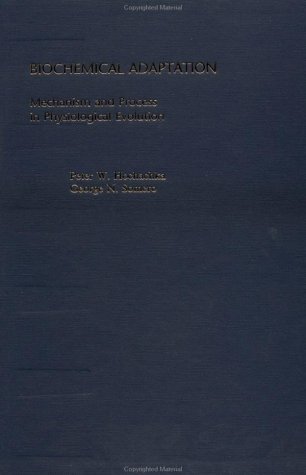Review:
"The result is a masterpiece: exciting, invigorating, and challenging."--Science, VOL 296, April 2002"Noting that "an underlying unity in biochemical design persists in the face of a remarkable degree of adaptive diversification in biochemical structures and processes," Hochachka (zoology, radiology, and sports medicine, U. of British Columbia, Canada) and Somero (director, Stanford U.'s Hopkins Marine Station) explain the evolutionary and genetic mechanisms by which organisms' biochemical systems have adapted so as to exploit a huge range of ecological niches on the land and in the sea. They review and analyzing the scientific literature that has appeared in the past 15 years. They come to three main conclusions about the adaptive process: that it is highly conservative and preserves biochemical unity, that the time available to an organism to fabricate and adaptive response governs strongly the types of materials that can be exploited, and that the organizational complexity of an organism create regulatory constraints not found in less complex organisms."--SciTech Book News "The result is a masterpiece: exciting, invigorating, and challenging."--Science, VOL 296, April 2002 "Noting that "an underlying unity in biochemical design persists in the face of a remarkable degree of adaptive diversification in biochemical structures and processes," Hochachka (zoology, radiology, and sports medicine, U. of British Columbia, Canada) and Somero (director, Stanford U.'s Hopkins Marine Station) explain the evolutionary and genetic mechanisms by which organisms' biochemical systems have adapted so as to exploit a huge range of ecological niches on the land and in the sea. They review and analyzing the scientific literature that has appeared in the past 15 years. They come to three main conclusions about the adaptive process: that it is highly conservative and preserves biochemical unity, that the time available to an organism to fabricate and adaptive response governs strongly the types of materials that can be exploited, and that the organizational complexity of an organism create regulatory constraints not found in less complex organisms."--SciTech Book News "The result is a masterpiece: exciting, invigorating, and challenging."--Science, VOL 296, April 2002 "Noting that "an underlying unity in biochemical design persists in the face of a remarkable degree of adaptive diversification in biochemical structures and processes," Hochachka (zoology, radiology, and sports medicine, U. of British Columbia, Canada) and Somero (director, Stanford U.'s Hopkins Marine Station) explain the evolutionary and genetic mechanisms by which organisms' biochemical systems have adapted so as to exploit a huge range of ecological niches on the land and in the sea. They review and analyzing the scientific literature that has appeared in the past 15 years. They come to three main conclusions about the adaptive process: that it is highly conservative and preserves biochemical unity, that the time available to an organism to fabricate and adaptive response governs strongly the types of materials that can be exploited, and that the organizational complexity of an organism create regulatory constraints not found in less complex organisms."--SciTech Book News "The result is a masterpiece: exciting, invigorating, and challenging."--Science, VOL 296, April 2002"Noting that "an underlying unity in biochemical design persists in the face of a remarkable degree of adaptive diversification in biochemical structures and processes," Hochachka (zoology, radiology, and sports medicine, U. of British Columbia, Canada) and Somero (director, Stanford U.'s HopkinsMarine Station) explain the evolutionary and genetic mechanisms by which organisms' biochemical systems have adapted so as to exploit a huge range of ecological niches on the land and in the sea. They review and analyzing the scientific literature that has appeared in the past 15 years. They come tothree main conclusions about the adaptive process: that it is highly conservative and preserves biochemical unity, that the time available to an organism to fabricate and adaptive response governs strongly the types of materials that can be exploited, and that the organizational complexity of anorganism create regulatory constraints not found in less complex organisms."--SciTech Book News
About the Author:
Peter W. Hochachka is at University of British Columbia. George N. Somero is at Stanford University.
"About this title" may belong to another edition of this title.


